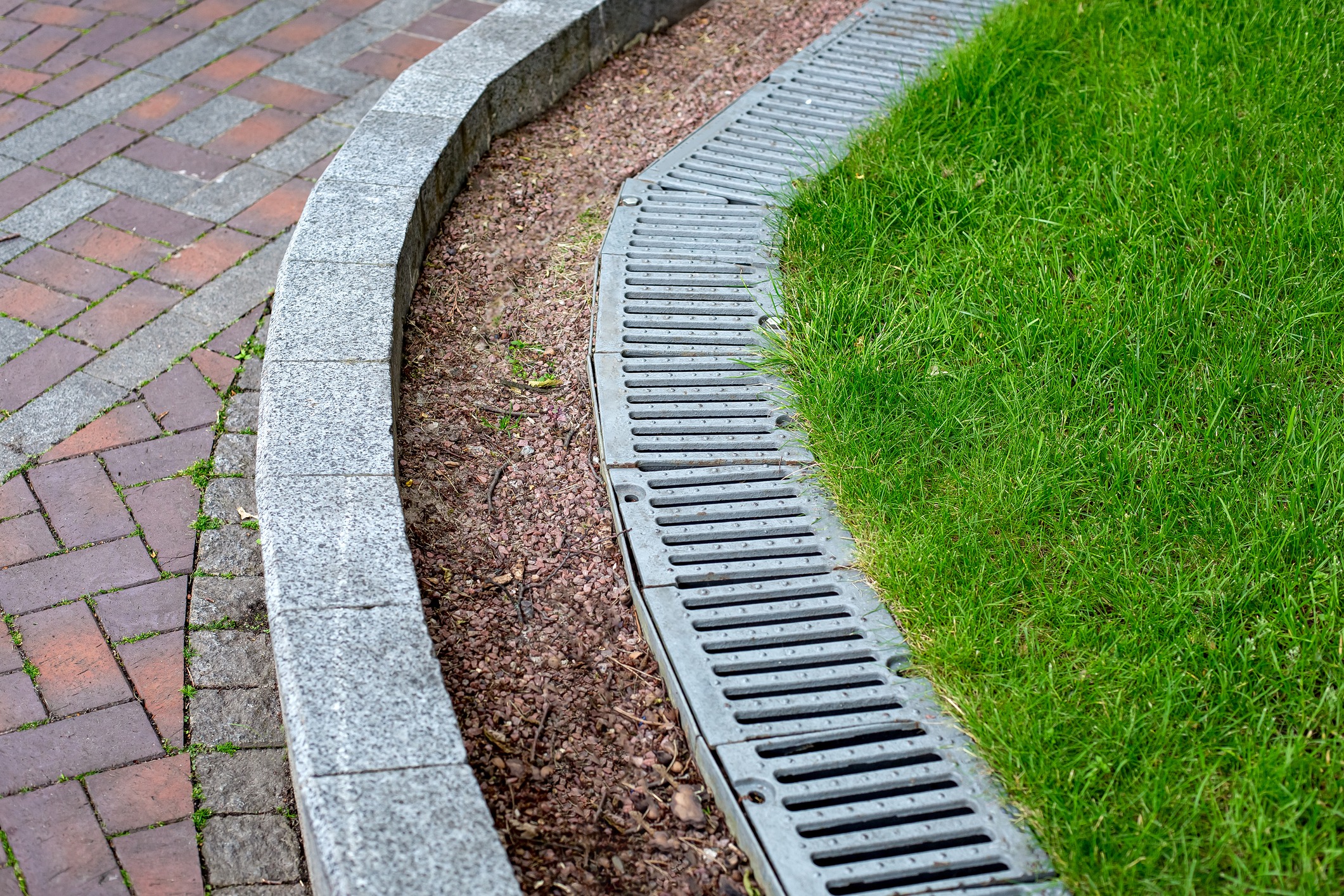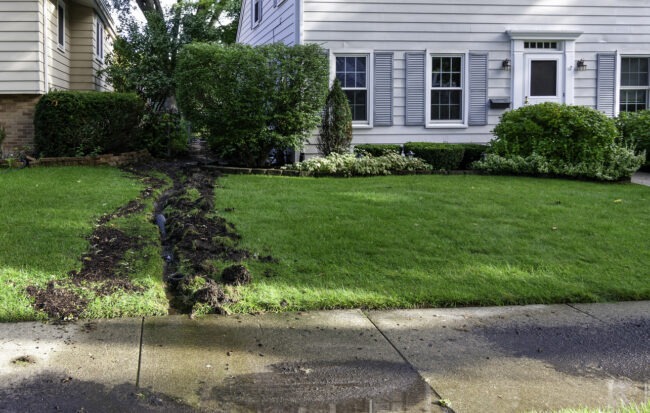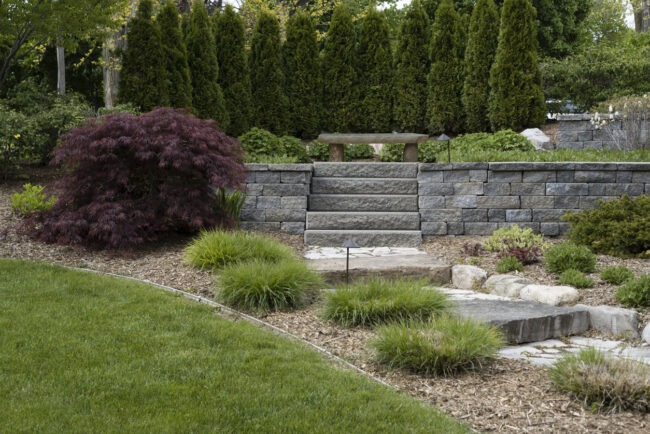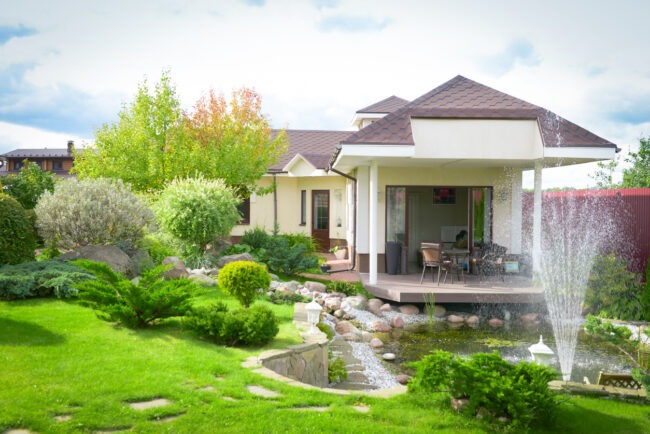Solving Johnson County Landscaping Challenges with Drainage Solutions & Retaining Walls

Landscaping is not only about planting trees and flowers; it involves a comprehensive understanding of how water interacts with your land. In regions like Johnson County, where the weather can be unpredictable, managing water flow becomes a critical component of landscape design. By implementing strategic drainage solutions and durable retaining walls, homeowners can protect their investments and enhance their property’s value. This article delves into the importance of these solutions, offering insights into their benefits and how they can be effectively integrated into your landscape.
Understanding the Importance of Drainage Solutions

Poor drainage can wreak havoc on your landscape, leading to waterlogged lawns, eroded hillsides, and even damage to your home’s foundation. In Kansas City landscaping, particularly in areas like Johnson County, where heavy rains are frequent, addressing these issues promptly is essential. Ignoring drainage problems can result in costly repairs and long-term damage to your property, making proactive solutions a vital part of landscape management. Effective drainage preserves the integrity of your landscape and supports plant health by preventing root rot and other water-related issues.
The Role of Drainage Solutions
Drainage solutions are designed to manage water flow, directing excess water away from your home and landscape. By effectively channeling water, you can prevent the adverse effects of erosion and protect your landscape investment.
- French Drains: These are trenches filled with gravel and a perforated pipe that redirects water away from problem areas. French drains are particularly useful in preventing basement flooding and can be adapted to various landscape designs, providing both functionality and subtlety.
- Surface Drains: Ideal for flat areas, surface drains capture and redirect water to prevent pooling. They are often integrated with other drainage systems to ensure comprehensive water management across the entire property, reducing the risk of stagnant water and mosquito breeding grounds.
- Dry Creeks: These mimic natural waterways, providing an aesthetic and functional solution for excess water. Dry creeks can be designed to complement the natural contours of your land, offering a visually pleasing and eco-friendly way to manage runoff while enhancing biodiversity.
By implementing these drainage solutions, you ensure that your landscape remains healthy and vibrant, even during the heaviest downpours. Effective drainage is not just about directing water away; it’s about creating a sustainable environment where plants can thrive and landscapes can endure the test of time.
The Beauty and Functionality of Retaining Walls

Retaining walls are not only functional but also add an element of beauty to your landscape. These structures are designed to hold back soil, creating level areas in your yard and preventing erosion on slopes. In addition to their practical benefits, retaining walls can serve as a focal point in your garden, adding layers and depth to your outdoor space.
Benefits of Retaining Walls
Retaining walls offer a range of benefits that make them a valuable addition to your landscape:
- Erosion Control: By stabilizing the soil, retaining walls prevent erosion, protecting both your landscape and your home’s foundation. This is particularly important on sloped properties, where erosion can lead to significant soil loss and destabilization.
- Increased Usable Space: They allow you to create flat, usable spaces in your yard, perfect for gardens, patios, or play areas. By transforming uneven terrain into functional areas, retaining walls can increase the utility and enjoyment of your outdoor space.
- Aesthetic Appeal: With various materials and designs available, retaining walls can enhance the visual appeal of your landscape, complementing your home’s architecture. From natural stone to sleek concrete designs, retaining walls can be customized to match any aesthetic preference.
- Improved Drainage: When integrated with drainage solutions, retaining walls further aid in managing water flow, preventing flooding and water damage. The combination of these elements ensures that water is directed appropriately, minimizing potential damage to your property.
Types of Retaining Walls
When considering retaining walls for your Kansas City landscaping, it’s important to choose the right type to suit your needs:
- Gravity Walls: These rely on their weight to hold back soil and are suitable for low walls. They are often constructed from heavy materials like stone or concrete and can be an economical option for smaller projects.
- Cantilevered Walls: These are reinforced with steel bars or concrete to support larger loads. Cantilevered walls are ideal for taller structures and can accommodate significant soil pressure, making them suitable for more challenging landscapes.
- Sheet Pile Walls: Ideal for tight spaces, these are driven into the ground to provide support. Sheet pile walls are typically used in areas with limited space, where traditional wall systems might not be feasible.
- Anchored Walls: Using anchors, these walls offer additional stability for steeper slopes. Anchored walls provide the necessary support for complex terrains, ensuring safety and durability over time.
Each type of retaining wall has unique advantages, and selecting the right one depends on your landscape’s specific needs. Consulting with a professional can help determine the best option for your property, ensuring both functionality and aesthetic appeal.
Integrating Drainage Solutions and Retaining Walls
The synergy between drainage solutions and retaining walls is essential for effective landscape management. By integrating these elements, you create a harmonious balance between functionality and aesthetics, ensuring your landscape can withstand the challenges of Kansas City weather. This integration addresses current landscaping issues and prepares your property for future environmental changes.
Key Considerations for Integration
When planning your landscape installation, consider the following:
- Assess the Landscape: Identify areas prone to erosion or poor drainage to determine the most effective solutions.
- Select Appropriate Materials: Choose materials that complement your home and landscape design while offering durability and low maintenance.
- Professional Installation: For optimal results, engage with experienced professionals who understand the intricacies of Kansas City landscaping and can tailor solutions to your needs. Professional expertise ensures that your landscape is designed and constructed to withstand local weather conditions and soil characteristics.
Properly integrating drainage solutions and retaining walls requires careful planning and execution. By considering these key factors, you can achieve a landscape that not only meets your aesthetic goals but also provides long-term functionality and sustainability.
Practical Tips for Homeowners

As a seasoned expert in the landscaping industry, here are some practical tips to help you navigate your landscaping challenges:
- Regular Maintenance: Regularly inspect and maintain your drainage systems and retaining walls to ensure they function effectively. Routine maintenance prevents small issues from becoming costly problems, saving time and money over the long term.
- Landscaping Plants: Use native plants and ground cover to help manage water flow and reduce erosion naturally. Native vegetation is well-suited to local climate conditions and can thrive with minimal intervention, making them a sustainable choice for your landscape.
- Consider Future Needs: Plan for future landscaping projects, ensuring your current solutions can be adapted to accommodate changes. Flexibility in your landscape design allows for growth and evolution, meeting your family’s needs as they change over time.
By following these practical tips, homeowners can effectively manage their landscapes, ensuring a lasting, functional outdoor space for years to come. Proactive planning and regular maintenance are key to overcoming the challenges posed by drainage and erosion.
In the ever-changing landscape of Johnson County, tackling drainage issues and erosion control is vital for a healthy, beautiful outdoor space. By employing strategic drainage solutions and retaining walls, you can transform your landscape into a functional and visually stunning environment. Whether you’re a homeowner enhancing your backyard or a professional exploring the details of landscape installation, these solutions provide a practical way to overcome common challenges.
Remember, a well-planned landscape not only elevates your home’s curb appeal but also provides a sustainable, enjoyable outdoor living space for years to come. As you embark on your landscaping journey, consider collaborating with professionals who understand the unique demands of Kansas City landscaping and can guide you toward the best solutions for your property. With the right strategies and expert guidance, you can create a landscape that meets today’s needs and adapts to tomorrow’s — ensuring a vibrant, sustainable environment for generations to enjoy.
Tags:

